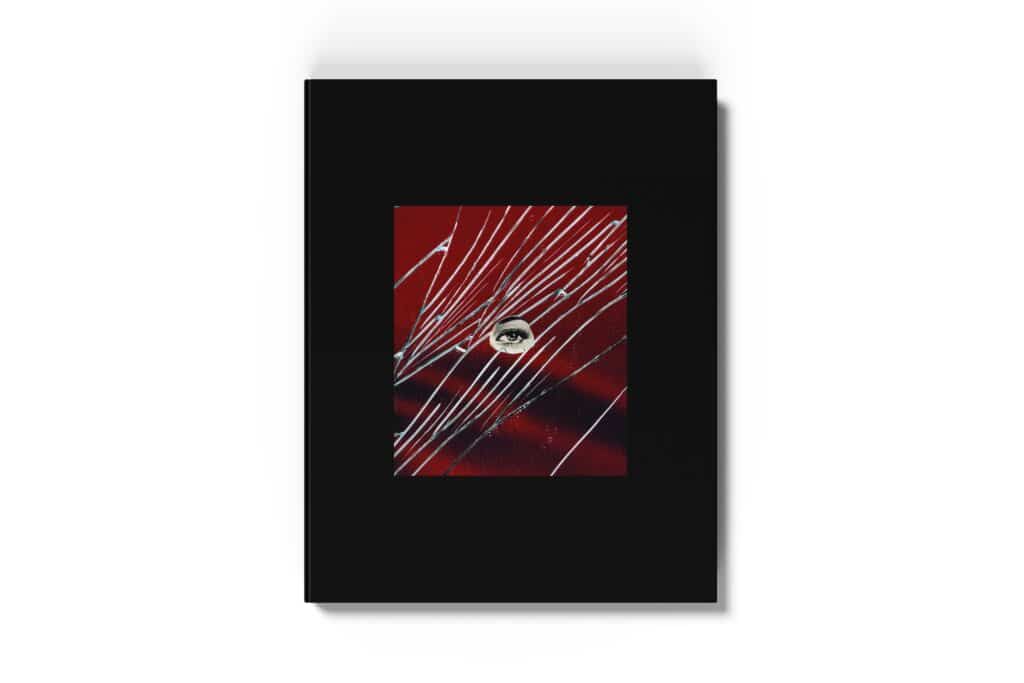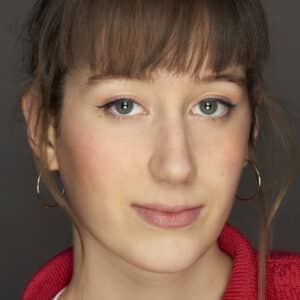On the cover of 57, a central eye. Perhaps a metaphor for the photographer’s eye, inviting us to turn the pages and look at the world as he sees it? “It’s a broken mirror abandoned on a London street. I took it home, put a red blanket in front of it, this eye cut out of a magazine, and that was it, I photographed.”
Ingenious and yet so simple, that’s how you could sum up Gioia’s work. A chronic motif, eyes can be found everywhere in Gioia’s still lifes. In a bouquet, on a table, in the reflection of a shop window… our own eye analyzes every detail, dissecting the image to uncover its secrets.
The mystery game
Each photo is a fragment of a larger scene, which, skilfully reframed, reveals a new reality, sometimes disconcerting, always poetic. “The thing I prioritized most was the decontextualization of elements: that is, alternating or diverting the context of the image,” explains Francesco Gioia. The influence of the Surrealists of the 1920s and 1930s is immediately apparent in his work. He cites Florence Henri, Germaine Krull, Tina Modotti and Man Ray as his major influences. “It’s something that happens subconsciously,” he remarks. “I have so many films, paintings and photos anchored inside me that it’s probably things that come naturally to mind without even having to think about them.”
And old meets new. Firstly, in the recurrence of that blood-red color, reminiscent of William Eggleston or Saul Leiter. Or through mirrors, broken lines and that abstract, angular, geometric Bauhaus aesthetic. Between facades and trompe-l’œil, each shot seems to come from “Tativille”, the fictional town in Jacques Tati’s Playtime, of which Gioia is a fervent admirer. “French cinema from the 1950s and 1960s, is really important in my future as a photographer.”
These snippets of life, beautifully plucked from the everyday, are all linked by a leitmotif: mystery. An element that the artist places at the heart of his creative process: “I refuse to work with a concept; I always make an effort to be in a state of uncertainty. What fascinates me is the moment, the journey. If I find comfort in my current environment, it means I’m probably not exploring the right territory. I think mystery brings an unexpected effect that enhances the end result.” He adds with a laugh, “It’s wonderful if it’s reflected in my work: 90% of the time, I don’t know what I want to communicate.”
Time for experimentation
His love of photography began at the photojournalism agency in Florence, where he handled vintage negatives from the 1960s-70s. Then, in 2015, he moved to London. It was here that he discovered street photography. “The beauty of photography is that you can just grab a camera, go out and start shooting. Anyone can do it. People often think you need talent, but what you really need is discipline. It’s a full-time job,” explains Francesco Gioia, who, for two years, walked the streets of the capital almost every day, for several hours at a time, trying to find something interesting to capture. “You don’t just get better at guitar by looking at it or reading books on the subject. You have to pick up the instrument and spend as much time with it as possible. That’s what I did with my camera.”
From this time spent exercising his eye and his curiosity, he draws a few anecdotes. Notably that of “the man with the hat”, the last photo in the book – the 57th, which gives the title its full meaning. It shows a man with his back to a painting in a shop window. A familiar street scene, yet “every time I tell people how I got this photo, the magic disappears a little”, Francesco admits with a laugh. “I followed the man for 20 minutes. I have, I think, 1,500 photos of him and they all suck, all of them! I was getting ready to leave, then at the last minute, he passed this paint store and turned around. That’s when I took the shot and left.
If this photo is so special to him, it must be because Gioia immediately knew it was a good one. Usually, he lets his images sit, then gives them a second life. According to him, images need time to find meaning. “You’re still emotionally attached to them when you took them. You have to let them rest for a while, sometimes even for months.” It is precisely this time for research that allows Francesco Gioia to experiment, to play with angles and introduce new elements that sublimate his images, nourishing that mystery that is so dear to him.
Learning how to look at the world
Before becoming a photographer, Francesco Gioia was first and foremost a musician. It is from this field that the artist draws his keen sense of composition and color. A true synesthete, he associates sounds with colors: “When I hear music, which is my main passion, I start to see colors, sometimes shapes. When I listen to my favorite artists, it’s always the beginning of something.
Today, photography has become part of his daily life, and he says he couldn’t live without it. “It goes beyond sharing them. I do it for myself. Maybe for my parents…but mostly for myself. I don’t care about meeting other people’s expectations. If they like it, so much the better.” A surprising bias for a photographer who doesn’t think much of his work, and who, on the contrary, hates looking at his images. “It’s like hearing your own voice,” he says, “I have to do it, to improve, because it’s part of the process. But what I retain is the experimentation of taking them, not the result. What’s interesting is looking at the world.”

57, Francesco Gioia, Parallel Editions, 80 pages, 65.00€.










